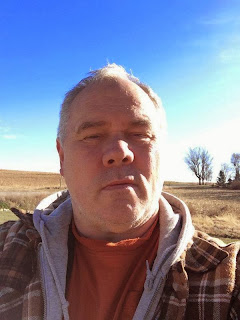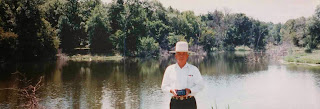Story about my painting in the Des Moines Register today.
'Wamanje Hintewi' ('Our Crops') is an acrylic painting by Lance Foster. / Michael Morain/the Register
Written by
Michael Morain
Visit the World Food Prize Hall of Laureates
Admission to the Hall of Laureates, 100 Locust St., [Des Moines, Iowa], is free and open to the public from 9 a.m. to 1 p.m. most Tuesdays and Saturdays. www.worldfoodprize.org
==
In the traditional account of the first Thanksgiving, the Wampanoag Indians usually take a back seat to the English colonists. They help the newcomers put food on the table and then quietly go their separate way, leaving the white settlers to their prayers and nation-building.
But a fresh reminder of Native America’s ongoing story now hangs in the Iowa Gallery at the World Food Prize Hall of Laureates. It’s a painting of an Ioway woman tending to sunflowers and the so-called “three sisters” — the corn, beans and squash that would have filled out that first Thanksgiving feast. The painting’s Ioway title is “Wamanje Hintewi” (“Our Crops”), which sounds a lot more Ioway than the artist’s decidedly un-Ioway name, Lance Foster.
But Foster is, in fact, a member of the Iowa Nation. He grew up in Montana, studied at Iowa State University and moved recently to a reservation in Kansas, where many members of the tribe now live. (The tribe’s northern branch calls itself the Iowa Tribe of Kansas and Nebraska, while the southern branch is the Iowa Tribe of Oklahoma.)
Ambassador Kenneth Quinn, who leads the World Food Prize Foundation, tracked him down a few years ago when Quinn was looking for the Ioway words for “prairie” (Tanji) and “corn” (Waduje), which were the titles of two other paintings at the Hall of Laureates. Quinn called Foster in Montana, out of the blue, and left it at that.
A couple of years passed before Quinn bumped into professor David Gradwohl, co-founder of Iowa State’s American Indian Studies Program. He mentioned that Foster was both a former student and a gifted artist.
So Quinn called Foster again and commissioned the new painting for the World Food Prize Foundation’s permanent collection. It arrived this fall.
“I just thought it would be a wonderful story” for the Hall of Laureates, Quinn said. “If you’re going to walk visitors through the history of agriculture in Iowa, let’s start them at the beginning.”
The artist explained his work this way: “This scene is set at the height of summer, with clouds bringing needed rain, and the moon regulating the rhythms of growth. The sun also indicates the passage of time, marking the past and the future, both contained in the present.”
And time rolls on. Foster painted four John Deere tractors around the painting’s border, each kicking up a plume of dust and seed corn.
“So many of the crops we depend on now — not just for food but fuel and clothing and all these other things — they’re based on crops we developed in the New World,” Foster said. “There’s a saying that the first seven feet of Iowa soil is made up of our bones.”
'Our Crops' tells 'a wonderful story'
Artist's tribute to first farmers hangs in Iowa Gallery at the World Food Prize Hall of Laureates
'Wamanje Hintewi' ('Our Crops') is an acrylic painting by Lance Foster. / Michael Morain/the Register
Written by
Michael Morain
Visit the World Food Prize Hall of Laureates
Admission to the Hall of Laureates, 100 Locust St., [Des Moines, Iowa], is free and open to the public from 9 a.m. to 1 p.m. most Tuesdays and Saturdays. www.worldfoodprize.org
==
In the traditional account of the first Thanksgiving, the Wampanoag Indians usually take a back seat to the English colonists. They help the newcomers put food on the table and then quietly go their separate way, leaving the white settlers to their prayers and nation-building.
But a fresh reminder of Native America’s ongoing story now hangs in the Iowa Gallery at the World Food Prize Hall of Laureates. It’s a painting of an Ioway woman tending to sunflowers and the so-called “three sisters” — the corn, beans and squash that would have filled out that first Thanksgiving feast. The painting’s Ioway title is “Wamanje Hintewi” (“Our Crops”), which sounds a lot more Ioway than the artist’s decidedly un-Ioway name, Lance Foster.
But Foster is, in fact, a member of the Iowa Nation. He grew up in Montana, studied at Iowa State University and moved recently to a reservation in Kansas, where many members of the tribe now live. (The tribe’s northern branch calls itself the Iowa Tribe of Kansas and Nebraska, while the southern branch is the Iowa Tribe of Oklahoma.)
Ambassador Kenneth Quinn, who leads the World Food Prize Foundation, tracked him down a few years ago when Quinn was looking for the Ioway words for “prairie” (Tanji) and “corn” (Waduje), which were the titles of two other paintings at the Hall of Laureates. Quinn called Foster in Montana, out of the blue, and left it at that.
A couple of years passed before Quinn bumped into professor David Gradwohl, co-founder of Iowa State’s American Indian Studies Program. He mentioned that Foster was both a former student and a gifted artist.
So Quinn called Foster again and commissioned the new painting for the World Food Prize Foundation’s permanent collection. It arrived this fall.
“I just thought it would be a wonderful story” for the Hall of Laureates, Quinn said. “If you’re going to walk visitors through the history of agriculture in Iowa, let’s start them at the beginning.”
The artist explained his work this way: “This scene is set at the height of summer, with clouds bringing needed rain, and the moon regulating the rhythms of growth. The sun also indicates the passage of time, marking the past and the future, both contained in the present.”
And time rolls on. Foster painted four John Deere tractors around the painting’s border, each kicking up a plume of dust and seed corn.
“So many of the crops we depend on now — not just for food but fuel and clothing and all these other things — they’re based on crops we developed in the New World,” Foster said. “There’s a saying that the first seven feet of Iowa soil is made up of our bones.”
Lance Foster












